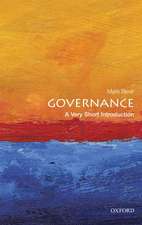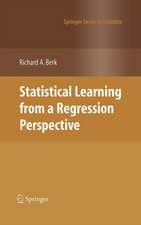Uncertainty and Quality in Science for Policy: Theory and Decision Library A:, cartea 15
Autor S.O. Funtowicz, J.R. Ravetzen Limba Engleză Hardback – 31 oct 1990
| Toate formatele și edițiile | Preț | Express |
|---|---|---|
| Paperback (1) | 942.31 lei 6-8 săpt. | |
| SPRINGER NETHERLANDS – oct 2011 | 942.31 lei 6-8 săpt. | |
| Hardback (1) | 948.92 lei 6-8 săpt. | |
| SPRINGER NETHERLANDS – 31 oct 1990 | 948.92 lei 6-8 săpt. |
Din seria Theory and Decision Library A:
- 18%
 Preț: 952.40 lei
Preț: 952.40 lei -
 Preț: 382.57 lei
Preț: 382.57 lei - 18%
 Preț: 958.25 lei
Preț: 958.25 lei - 18%
 Preț: 949.23 lei
Preț: 949.23 lei - 18%
 Preț: 1232.09 lei
Preț: 1232.09 lei - 15%
 Preț: 643.34 lei
Preț: 643.34 lei - 15%
 Preț: 581.79 lei
Preț: 581.79 lei - 15%
 Preț: 644.49 lei
Preț: 644.49 lei - 15%
 Preț: 642.83 lei
Preț: 642.83 lei -
 Preț: 389.70 lei
Preț: 389.70 lei - 18%
 Preț: 947.67 lei
Preț: 947.67 lei - 15%
 Preț: 641.20 lei
Preț: 641.20 lei -
 Preț: 388.90 lei
Preț: 388.90 lei - 15%
 Preț: 640.37 lei
Preț: 640.37 lei - 18%
 Preț: 952.26 lei
Preț: 952.26 lei - 15%
 Preț: 641.20 lei
Preț: 641.20 lei - 18%
 Preț: 953.35 lei
Preț: 953.35 lei - 18%
 Preț: 952.89 lei
Preț: 952.89 lei - 18%
 Preț: 951.47 lei
Preț: 951.47 lei - 15%
 Preț: 636.94 lei
Preț: 636.94 lei - 18%
 Preț: 944.82 lei
Preț: 944.82 lei - 15%
 Preț: 643.84 lei
Preț: 643.84 lei - 18%
 Preț: 1383.81 lei
Preț: 1383.81 lei - 18%
 Preț: 1331.51 lei
Preț: 1331.51 lei - 20%
 Preț: 641.99 lei
Preț: 641.99 lei - 15%
 Preț: 647.40 lei
Preț: 647.40 lei
Preț: 948.92 lei
Preț vechi: 1157.22 lei
-18% Nou
Puncte Express: 1423
Preț estimativ în valută:
181.57€ • 190.59$ • 150.71£
181.57€ • 190.59$ • 150.71£
Carte tipărită la comandă
Livrare economică 10-24 aprilie
Preluare comenzi: 021 569.72.76
Specificații
ISBN-13: 9780792307990
ISBN-10: 0792307992
Pagini: 231
Ilustrații: XI, 231 p.
Dimensiuni: 160 x 240 x 19 mm
Greutate: 0.54 kg
Ediția:1990
Editura: SPRINGER NETHERLANDS
Colecția Springer
Seria Theory and Decision Library A:
Locul publicării:Dordrecht, Netherlands
ISBN-10: 0792307992
Pagini: 231
Ilustrații: XI, 231 p.
Dimensiuni: 160 x 240 x 19 mm
Greutate: 0.54 kg
Ediția:1990
Editura: SPRINGER NETHERLANDS
Colecția Springer
Seria Theory and Decision Library A:
Locul publicării:Dordrecht, Netherlands
Public țintă
ResearchCuprins
Prologue.- Introduction: Some Illustrative Examples.- 1. Science for Policy: Uncertainty and Quality.- 1.1 Information for Policy-Related Research.- 1.2 How to Cope with Uncertainty?.- 1.3 Dilemmas for Science.- 1.4 Quality Assurance and Policy.- 1.5 Uncertainty and Policy.- 2. Uncertainty and Its Management.- 2.1 Uncertainty in Probability.- 2.2 Statistics, Computers and Uncertainty.- 2.3 Types of Uncertainty.- 2.4 Uncertainty-Avoidance in Bureaucracies.- 2.5 Criticism: Technical, Methodological and Philosophical.- 2.6 The NUSAP Scheme, Uncertainty and Quality.- 2.7 NUSAP: Philosophy and Practice.- 3. The Mathematical Language.- 3.1 Historical Perspective.- 3.2 Mathematical Language and Uncertainty.- 3.3 Formalization and Infinite Regress.- 3.4 Rules: When to Over-Ride?.- 3.5 Ambiguity and Vagueness.- 3.6 Arithmetical Rules: The Fossils Joke.- 3.7 Zero: Counter or Filler?.- 3.8 Rounding-off: The ?-Dilemma.- 3.9 Craft Skills and “Monsters”.- 4. Craft Skills with Numbers.- 4.1 Skills in Statistics.- 4.2 Skills in Cost-Benefit Analysis.- 4.3 Skills in Science.- 4.4 Degeneration of Skills.- 4.5 Policy-Related Research and Skills.- 4.6 New Skills for Policy-Related Research.- 4.7 Diffusing the Skills of Quality Assurance.- 5. Measurements.- 5.1 History in Science.- 5.2 Uncertainties at the Foundations of Science.- 5.3 N. R. Campbell: Measuring Length.- 5.4 Temperature: Measurement and Calculation.- 5.5 Uncertainties in Practice and Theory.- 5.6 Scientific Uncertainty: Philosophy and Practice.- 6. Maps.- 6.1 “Soft” Maps v. “Hard” Numbers.- 6.2 Maps and their Uncertainties.- 6.3 The “Border with Ignorance”.- 6.4 Maps: Why Quality Counts.- 6.5 Intermediate Cases: Theme and Graph Maps.- 6.6 Graphs.- 6.7 Dials v. Digits.- 6.8 The Fruitful Vagueness of Maps.- 7.Mathematical Notations: Functions and Design.- 7.1 Mathematics and Symbolism.- 7.2 Designing for Uncertainty.- 7.3 Functions of Numbers.- 7.4 Names for Numbers: The “Billion” Story.- 7.5 Place-Value Scheme.- 7.6 Fruitful Contradiction.- 7.7 Symbolism in Chemistry.- 8. The NUSAP Scheme: Introduction.- 8.1 NUSAP: Design Criteria.- 8.2 NUSAP: Place-Value.- 8.3 Trading-Off Uncertainties.- 9. The NUSAP Categories: Numeral, Unit and Spread.- 9.1 Numeral.- 9.2 Unit.- 9.3 Numeral and Unit: Nuances of Expression.- 9.4 Spread.- 9.5 Topology: Grid and Resolution.- 9.6 Spread as a Quasi-Quantity.- 10. The NUSAP Categories: Assessment and Pedigree.- 10.1 Assessment.- 10.2 Examples of Assessment.- 10.3 Pedigree.- 10.4 The Pedigree Matrix for Research.- 10.5 Applications of Pedigree.- 10.6 A NUSAP Expression for a Policy Forecast.- 10.7 Pedigrees for Environmental Models and for Functional Quality.- 10.8 Elicitation: Use and Design of Pedigree.- 11. The NUSAP Pedigree for Statistical Information.- 11.1 Statistical Information: Its Production in Bureaucracies.- 11.2 The Pedigree Matrix.- 11.3 Practical Problems.- 11.4 An Illustrative Example.- 11.5 Indicators: The Elucidation of Quality.- 12. Mapping Uncertainties of Radiological Hazards.- 12.1 Quality of Radiological Data.- 12.2 Quality Evaluation for Radiological Model Parameters.- 12.3 Illustration of Pedigree Ratings for Model Parameters.- 12.4 Parameter Uncertainty and Model Reliability.- 12.5 Parameter Contribution to Model Spread.- 12.6 Illustrative Example.- 13. Further Applications of The NUSAP System.- 13.1 An Arithmetic for Assessment.- 13.2 An Example: The Valuation of Ecosystems.- 13.3 Risk Indices: A NUSAP Analysis.- 13.4 Calculating the Risk Indices for Energy Technologies.- Epilogue.- References.
Notă biografică
S.O. Funtowicz is a Visiting Scientist at the European Community Joint Research Centre at Ispra (Varese), Italy. He has taught mathematics, logic and research methodology in Buenos Aires, Argentina.
J.R. Ravetz is the Chairman of the Council for Science and Society in London. He was formerly Reader in the History and Philosophy of Science at the University of Leeds. His previous writings include Scientific Knowledge and its Social Problems (Oxford, 1971) and The Merger of Knowledge with Power (Cassel, 1990).
J.R. Ravetz is the Chairman of the Council for Science and Society in London. He was formerly Reader in the History and Philosophy of Science at the University of Leeds. His previous writings include Scientific Knowledge and its Social Problems (Oxford, 1971) and The Merger of Knowledge with Power (Cassel, 1990).
























